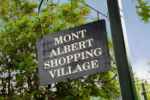|
|
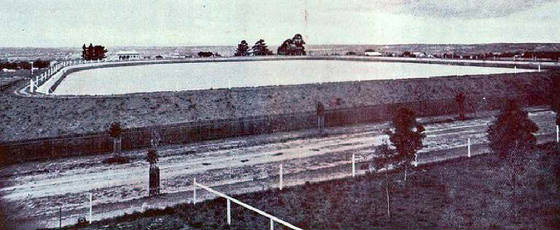
|
| 1892 - Surrey Hills Reservoir No. 1 |
|
|
| 1841 - carting water in Melbourne |
Background
In the era up to 1890 there was no permanent water supply to the Nunawading Shire, which included the Whitehorse district.
In the Boroondara Parish, water mains had been laid on only as far as Union Rd, Surrey Hills, in
1889.
In 1895, a standpipe was built at the Whitehorse Hotel site in Whiitehorse Rd, using water from the Surrey
Hills Reservoir to supply Box Hill.
In the years 1902-1905, water reticulation in the Surrey Hills area continued - Mont Albert Station had
water connected, but there were no taps.
The Surrey Hills Reservoirs
The
western terminus of the original O'Shannassy Aqueduct was at the Surrey Hills Reservoir No.1, on the corner of Canterbury
Rd and Tower St.
This storage facility was completed in 1892, with a capacity of
9 million gallons, servicing the areas of Box Hill and neighbouring suburbs. Until 1914 it was fed from the Yan Yean Reservoir
by pipes.
The Reservoir was buil to on the site of the former Observation Tower,
itself erected in 1882.
When the O'Shannassy System was commissioned in 1914, Surrey Hills was then linked
to the O'Shannassy Aqueduct by pipes from Launching Place.
In 1925, a pipe-head reservoir was built at Olinda,with a capicity of 11 million gallons - this was inserted into the
O'Shannassy System, and carried water to a smaller storage dam at Mitcham, then to Surrey Hills.
In 1929, a second Surrey Hills storage reservoir was built, of 15 million gallons capacity, a short distance away from
the No. 1 facility, on Bentley St, on the hill near Elgar Rd, and also fed from the O'Shannassy scheme. It incorporates
the Water Tower, built in 1929, the first to be built by the MMBW. This imposing structure,a local landmark, resembles the
Leaning Tower of Pisa, but unlike the Italian tower, it is vertical!
Both reservoirs
operate to this day, managed by Melbourne Water.
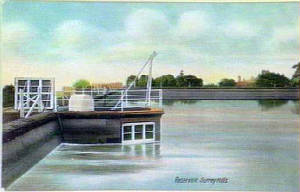
|
| 1908 - No. 1 Reservoir |
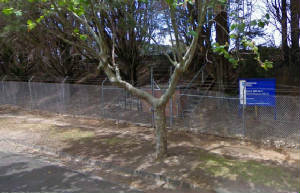
|
| 2013 - Reservoir No. 1 |
|
|
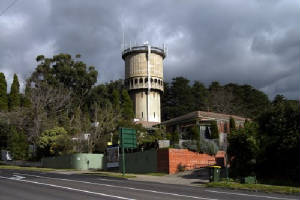
|
| 2013 - the Water Tower |
Supplementary Information
During the first years of settlement
the settlers obtained their household water from creeks and run-off from their shingle-roofed homes into wooden butts. The
advent of corrugated iron led to the installation of tanks, and when local fired bricks became available domed wells fitted
with hand pumps also became sources of water supply.
The butts and tanks have gone, but some of
the older buildings in the Surrey Hills/Mont Albert/Box Hill area still have their wells, although these are now covered over.
The expansion of settlement towards the east brought about the extension of the 32 inch water mains from the Yan Yean
reservoir to Box Hill. In 1892 the Surrey Hills Number 1 Reservoir was built at a cost of 12,000 pounds to supply higher sections
of the area. Construction of Surrey Hills Number 2 Reservoir was completed in 1913 and the accompanying tower was built in
1929.
Water is supplied to the reservoir by a 36 inch main from Maroondah and a supplementary 46 inch main from
Mitcham set down in 1940. During peak period water flows from the tower to supplement ground level pump supply. The cylindrical
tank, which has a capacity of 100,000 gallons, is mounted on a reinforced concrete shaft 26 feet in diameter and 95 feet high.
The overall height of the Surrey Hill’s tower and tank is 109 feet.
Because of it’s location, 450 feet above sea level, and its height, the structure was specially designed
so as to soften its impact on the surrounding area. The water tank component has vertical recessed panels framed in the wall
while the balcony located at the base of the tank has a decorative treatment consisting of twenty four arches.
The roof is sloped to conform with the general architectural concept of the tower.

|
| 1916 - collecting water from standpipe, Balwyn Rd |
|
|
Sewerage In Melbourne in the 1860s, methods for disposing
of human waste were very basic. A toilet
consisted of a bucket that was housed in a wooden structure known as a
pan closet toilet or thunderbox.
The early solution was to cart human waste away to the outer fringes
of Melbourne where it was often used as fertiliser by market gardeners
or taken to the tip.
Thunderboxes were only emptied about once a week by a nightman (so
called because he collected pans at night by reaching through a small
door in the back of the closet). Because the waste stayed in the pan for
up to a week, thunderboxes were really smelly.
Since walking to the thunderbox in the cold and dark of night was not
very appealing, many people opted to use chamber pots at night instead
(which were often emptied straight into street drains).
To make matters worse, as Melbourne’s population grew the system of
nightmen couldn't keep up and more and more people started disposing of
their wastes directly into street drains. Sewerage was infoduced n Surrey Hills in the eafrly 1900s.
|
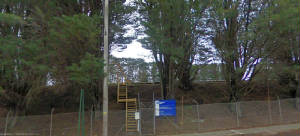
|
| 2013 - Reservoir No. 2 |
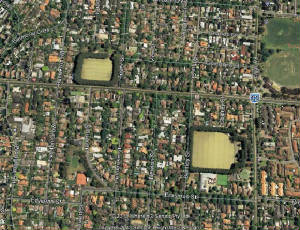
|
| 2013 - locations of the two reservoirs |
|
